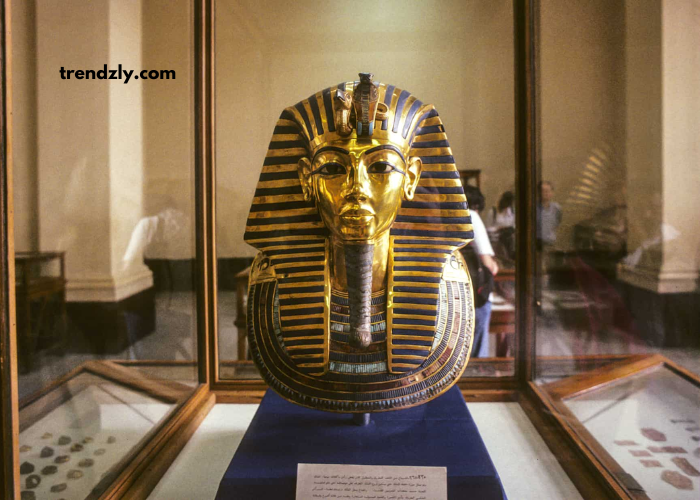As we scramble through our daily lives, sometimes it’s worth taking a pause and delving deep into the mysteries of the past. Ancient Egypt, a civilization known for its enigmatic pyramids, hieroglyphics, and mummies, holds secrets that are equally riveting and perplexing. Today, we’re unearthing seven ancient Egyptian secrets that might just make you view the world a little differently. And who knows, you might find some uncanny connections with some illuminated knowledge from the past that still influences our society today.
Hieroglyphic Wonders
The ancient Egyptians used more than 700 hieroglyphs, which are sacred carvings, to communicate. These symbols, depicting animals, objects, and numbers, were far more than just a form of writing. They were a sacred language, a means of linking the earthly and the divine. They bear an uncanny resemblance to the way we use symbols and codes in our societies today, carrying hidden messages and meaning.
Advanced Medical Knowledge
It’s astounding to discover that the ancient Egyptians had a profound understanding of the human body. They practiced medicine in ways that were incredibly advanced for their time. Their knowledge on tackling ailments and diseases could make you reconsider how medical law evolved with advances in human physiology.
Architectural Marvels
The pyramids are a testament to ancient Egypt’s architectural genius. Built with meticulous precision, these structures have withstood the test of time, raising questions about the techniques and tools used in their construction. The alignment of the pyramids with celestial bodies showcases their advanced knowledge of astronomy.
Mummification Process
The Egyptians believed in life after death, which led to the development of the intricate process of mummification. This practice demonstrated their understanding of the human anatomy and chemistry, preserving bodies for the afterlife in a way that continues to baffle modern scientists.
Calendar Creations
The ancient Egyptian calendar, based on the lunar and solar cycles, was so accurate that it closely resembles the modern calendar we use today. This ancient time-keeping method proves their advanced understanding of astronomy and seasons, aligning closely with fascinating facts about extra-terrestrial bodies.
Artistic Expressions
Art was an integral part of ancient Egyptian culture. Their detailed and symbolic artwork wasn’t just for aesthetic purposes but was a form of communication, documenting their history, beliefs, and daily life. This vivid expression through art allows us a glimpse into their world, letting us unravel more about their society.
Mathematical Prowess
Ancient Egyptians exhibited remarkable mathematical skills. They used complex mathematics to build architectural wonders, calculate the area of fields, and even predict the Nile floods. Their number system and geometrical knowledge were integral to their daily lives and monumental constructions.
Uncovering these secrets from ancient Egypt gives us not only a glimpse into a civilization long gone but also a reflection on our current society. How much have we evolved, and how much have we retained? Delving into Jake Parker’s insights on ancient illuminations and their influence on modern society might just give you a deeper understanding and appreciation for the wonders of the ancient world.
Cosmic Alignments and Mysteries
Ancient Egyptians had a deep connection with the cosmos. The pyramids of Giza are aligned with incredible precision to the stars in Orion’s Belt, showcasing their understanding and reverence for celestial bodies. This relationship between terrestrial and cosmic elements played a pivotal role in their culture, influencing religious beliefs, agricultural practices, and architectural designs. These cosmic alignments have intrigued scientists and archaeologists, opening up discussions on the Egyptians’ astronomical knowledge and the significance of these alignments in their civilization.
Sacred Rituals and Religious Beliefs
Religion was an integral part of life in ancient Egypt. The Egyptians practiced polytheism, with a multitude of gods and goddesses, each governing different aspects of the natural world and human existence. Sacred rituals, ceremonies, and offerings were common, aimed at appeasing the deities to ensure harmony and balance in their lives. Temples dedicated to these gods were architectural masterpieces, filled with intricate carvings, statues, and sacred artifacts. The study of these religious practices and temples provides insights into the spiritual and societal values of this ancient civilization.
Legacy of the Pharaohs
The pharaohs of ancient Egypt left behind a legacy that continues to captivate the world. As divine rulers, they played a crucial role in maintaining Ma’at, the ancient Egyptian concept of truth, balance, order, and justice. The pharaohs commissioned monumental structures, statues, and artworks as a testament to their reign and divine connection. The tombs of the pharaohs, filled with treasures and artifacts, provide a wealth of information about their lives, reigns, and the socio-political landscape of ancient Egypt. Unraveling the stories of the pharaohs brings to light the complexities and advancements of this fascinating civilization.
